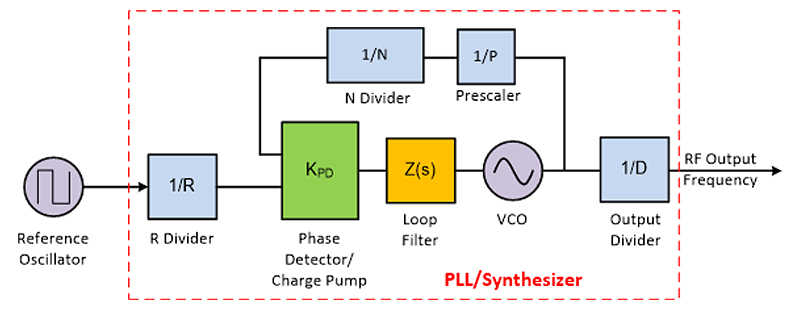In space, no one can hear you scream about your overcomplicated and expensive satellite PLL synthesizer design.
Designing a phase-lock loop (PLL) synthesizer requires multiple individual components and discrete devices that take up a lot of volume and add significant mass. A typical PLL design might consist of a discrete voltage-controlled oscillator (VCO), a synthesizer and often an additional pre-scaler/divider or an output multiplier to accommodate higher frequencies. In some cases, even discrete phase detector/charge pumps are used to minimize noise in the system. With a long list of critical components, it’s not surprising that size and complexity would create challenges for designers working to create smaller, lighter systems that they intend to launch into space.
The challenge is similar to what mobile phone designers faced when implementing radio frequency (RF) and microwave components in early mobile devices. Relying on the integrated circuits (ICs) available at the time, these handheld devices required a plethora of discrete components – resulting in expensive, bulky devices with miniscule battery life.
Although the synthesizers in a mobile phone and a satellite system have largely different requirements, they do share the challenges for maintaining performance while reducing mass/volume. So, how did we get from brick-sized phones to the sleek and pocket-friendly smartphones today, and how can satellite system designers simplify their PLL designs? By integrating RF and synthesizer components into monolithic RF ICs.

More speed, less board space

Integration isn’t an alien concept for designers today, nor is it limited to space or mobile phone designs. Communication satellites employ a wide range of RF and microwave frequencies. The growing complexity of both satellite-to-ground and intersatellite communication systems requires new architectural concepts.
Existing discrete synthesizer solutions with multiple components comprising multiple VCOs, PLL dividers, a charge pump and supporting circuitry can occupy an 8-inch-by-10-inch footprint. With higher levels of integration, it’s possible to fit the same functionality into a 1-inch-by-1-inch printed circuit board area. It’s important to minimize the overall power consumption to avoid any problems dissipating extra heat. Having integrated low-dropout regulators provide internal power supplies eliminates the need for more external radiation-hardened components.
Figure 1 provides a visual reference to PLL/synthesizer functional blocks suitable for full or partial integration into a monolithic RF IC.

Figure 1: RF PLL/synthesizer functional blocks
Integration can also help with reliability. Implementing a wideband synthesizer with an integrated multicore VCO, when compared to using discrete VCO modules, is an intuitive and more cost-effective approach when minimizing system size. The smaller the solution surface area, the lower the chances are of a stray heavy-ion hitting a critical component and disrupting normal operation.
Ready for lift-off?
So if you are looking to kick off a space-ready RF synthesizer project or searching for how to save space in an existing design platform, there is a ray of hope on the horizon. A few key requirements are now easier to check off at the start, with integration in RF IC technology to help you navigate through the difficult performance requirements of space-ready designs.
Additional resources





